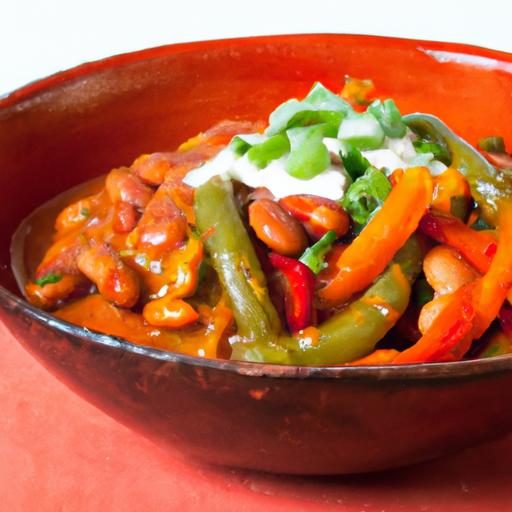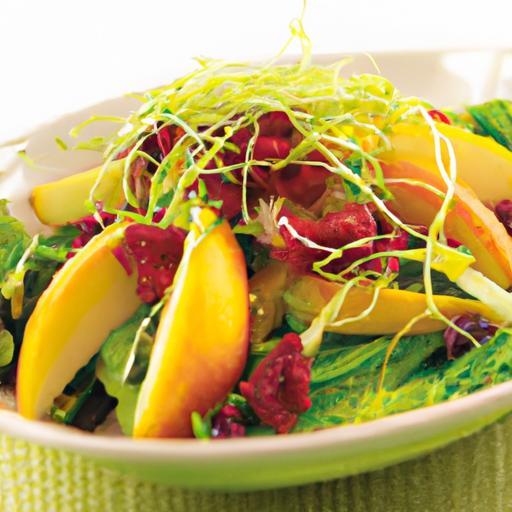There’s nothing quite as refreshing as a crisp, vibrant salad-each bite bursting with fresh, crunchy goodness. Yet, all too often, that perfect texture succumbs to a soggy fate by the time it lands on our plates. Whether it’s the dreaded wilt, the dreaded watery wilt, or the sorry sog, soggy salads are the culinary crime of the salad world. But fear not: behind every perfectly pristine salad lies a handful of clever secrets. In this article, we’ll unveil the art and science of keeping your greens gloriously crisp and your toppings tantalizingly fresh, ensuring every forkful feels like a garden-fresh celebration. Say goodbye to sogginess and hello to the freshest salads you’ve ever tasted!
Crisp & Fresh: Secrets to Keep Salads From Getting Soggy
Embarking on a journey to create salads that burst with crunch and vibrant freshness is an art that begins with choosing the right greens. From the peppery snap of arugula to the resilient crunch of romaine, selecting sturdy leaves sets the foundation for crisp & fresh salads that retain their texture through every bite. It’s not merely about tossing ingredients together; it’s about honoring the unique qualities each green brings, mastering storage techniques, and orchestrating perfect dressings that preserve, rather than drown, your garden mix.
Prep and Cook Time
- Preparation: 15 minutes
- Assembly: 10 minutes
- Total Time: 25 minutes
Yield
4 generous servings
Difficulty Level
Easy
Ingredients
- 6 cups mixed greens (romaine, kale, baby spinach, and arugula)
- 1 cup radicchio, chopped (for added crunch and color)
- 1 medium cucumber, sliced thinly
- 1/2 cup roasted chickpeas (texture booster)
- 1/4 cup toasted pumpkin seeds
- 1/3 cup shaved Parmesan cheese
- For the dressing:
- 3 tbsp extra virgin olive oil
- 1 tbsp apple cider vinegar
- 1 tsp Dijon mustard
- 1 tsp honey
- Salt and pepper to taste
Instructions
- Wash and dry all greens thoroughly using a salad spinner to ensure moisture removal – this is a vital step for keeping leaves crisp.
- Chop romaine and radicchio into bite-sized pieces to maintain their sturdy texture, while keeping tender greens like spinach and arugula whole or gently torn.
- Separate the greens and store in airtight containers lined with paper towels. The towels absorb excess moisture, preventing sogginess during storage.
- Prepare the dressing by whisking together olive oil, apple cider vinegar, Dijon mustard, honey, salt, and pepper in a small bowl. Set aside.
- Toast pumpkin seeds in a dry skillet over medium heat for 3-4 minutes, stirring often until golden and fragrant. Remove and let cool.
- Roast chickpeas if not pre-roasted: Toss chickpeas with olive oil, salt, and smoked paprika; bake at 400°F (200°C) for 20 minutes until crisp.
- Just before serving, toss the greens lightly with half the dressing to coat without making leaves soggy.
- Layer cucumber slices, roasted chickpeas, pumpkin seeds, and shaved Parmesan on top to add delightful texture contrasts and visual appeal.
- Serve remaining dressing on the side, allowing guests to add more according to taste.
Tips for Success
- Choose crisp greens like romaine and radicchio as your base, combined with delicate leaves for both flavor and structure.
- Always dry your greens thoroughly – moisture is the enemy of crispness in salads.
- Store salad components separately when prepping ahead, combining only at serving to maximize crunch.
- Use dressings with acidic elements and emulsifiers like mustard to cling lightly and prevent sogginess.
- Incorporate texture boosters such as toasted nuts, seeds, or chickpeas for satisfying bite.
- For an earthier crunch, swap pumpkin seeds with chopped walnuts or pecans.
Serving Suggestions
Present your salad in a large, shallow ceramic bowl to showcase the vibrant colors and textures. Garnish with freshly cracked black pepper, a few delicate basil leaves, or edible flowers for a refined finish. Pair it alongside grilled chicken or a fresh loaf of artisan bread to create a balanced meal that celebrates freshness and crunch in every bite.
| Nutrient | Amount per Serving |
|---|---|
| Calories | 180 |
| Protein | 7g |
| Carbohydrates | 14g |
| Fat | 11g |

For more insights on keeping your greens at peak freshness, check out our Ultimate Guide to Salad Storing. To enhance your understanding of leafy greens’ nutritional benefits, visit EatRight.org.
Q&A
Q&A: Crisp & Fresh – Secrets to Keep Salads From Getting Soggy
Q1: Why do salads often turn soggy, even when freshly made?
A: Salads lose their crispness mainly because of moisture buildup. When water from washed greens or juicy ingredients sits without proper drainage or separation, it makes leaves limp and dressing-heavy parts soggy. The enemy? Excess water mixing with salad ingredients before serving.
Q2: How can I properly wash salad greens without making them soggy?
A: Rinse greens under cool water to clean them and then spin them dry in a salad spinner, or pat them gently with paper towels. Removing every drop of moisture is essential because even a little leftover water can speed up sogginess.
Q3: What’s the secret to storing salad so it stays fresh longer?
A: Store your greens with a paper towel inside the container or bag to absorb excess moisture. Keep the greens loosely packed, not crushed, and store them in a breathable container. Avoid sealing until you’re ready to eat, to keep airflow and reduce condensation.
Q4: Can the choice of ingredients impact salad freshness?
A: Absolutely! Some veggies like cucumbers, tomatoes, and fruits release a lot of juice. To keep salads crisp, add these juicy items just before serving rather than mixing them in early. Also, sturdier greens like romaine or kale tend to last longer than delicate baby spinach or arugula.
Q5: How should salad dressings be handled to avoid soggy greens?
A: Dress salads right before eating, and toss just enough to coat the leaves lightly. For make-ahead meals, serve the dressing on the side or keep it separate until serving time. Vinegar- or citrus-based dressings keep greens a bit brighter and crisper compared to creamy dressings that can weigh veggies down fast.
Q6: Are there any clever hacks to maintain crunchiness throughout the day?
A: Try layering your salad with the driest ingredients at the bottom and greens on top, or use lettuce leaves as natural “containers” for other ingredients. You can also sprinkle a tiny bit of baking soda in water when washing greens to help crisp them up, then rinse thoroughly.
Q7: Can freezing or chilling salad ingredients help prolong freshness?
A: Chilling is your ally-cold temperatures slow down moisture release and wilting. Avoid freezing fresh greens, as thawing turns them watery and mushy. However, chilling certain crunchy veggies like carrots or celery before adding them to salad can amp up freshness.
Q8: What’s the takeaway to keep salads crisp and fresh every time?
A: It’s all about controlling moisture and timing: thoroughly dry your greens, keep wet and dry ingredients separate until serving, store salad smartly with airflow and absorbent materials, and dress just before eating. A little care and timing turn soggy sadness into crisp, fresh delight!
In Summary
In the end, a truly crisp and fresh salad is a celebration of texture and taste-a vibrant dance of flavors that delights the senses with every bite. By understanding the secrets behind sogginess and applying simple yet smart techniques, you can transform your greens from limp to luscious, keeping them garden-fresh long after preparation. So next time you toss your salad, remember: a little care, the right ingredients, and thoughtful storage can make all the difference. Embrace these tips, and watch your salads stay crisp, fresh, and utterly irresistible every time.








